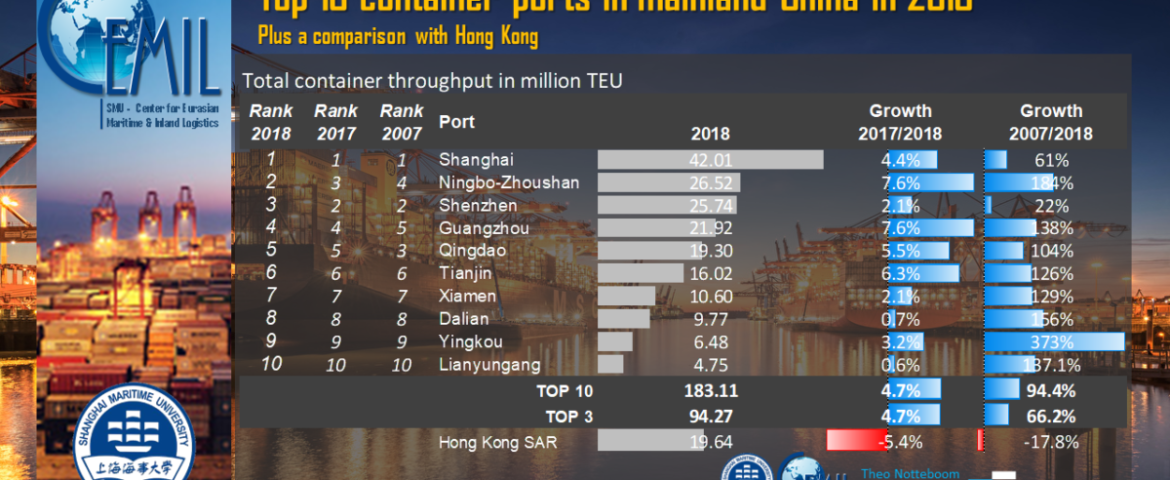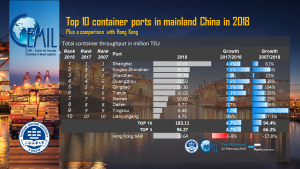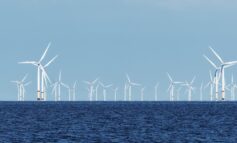The table provides an overview of the total TEU throughput in 2018 of the top 10 container ports in mainland China (plus Hong Kong) and also shows the growth figures 2017/2018 and 2007/2018. The figures lead to the following conclusions.
Shanghai remains the no. 1 container port in mainland China and the world
The top 10 ports in China handled 183 million TEU in 2018 or +4.7% compared to 2017. Shanghai in the Yangtze River Delta remains the undisputed no. 1 container port in mainland China and the world with over 42 million TEU in 2018 (+4.4%). The Chinese government developed a strong focus on Shanghai in the mid-1990s. As a result the Yangtze River Delta emerged as the most prominent container growth region in China reaching an elevated average annual growth of 30% in container throughput between 1995 and 2005. Last year, Shanghai’s neighbour, the port Ningbo-Zhoushan in Zhejiang province, climbed to second place at the expense of Shenzhen, the leading port in the Pearl River Delta. Another Pearl River Delta port, Guangzhou, kept its fourth position. Both Shenzhen and Guangzhou now handle more containers than the third largest hub in the Pearl River Delta, i.e. Hong Kong. Qingdao in Shandong province is the highest ranked port of northeastern China in the list. Ningbo-Zhoushan and Guangzhou recorded the strongest growth in 2018 among the top ten ports, but did not reach double digit growth figures which were characteristic for the Chinese container port system throughout the 1990s and 2000s. In fact, the 4.7% growth of the top 10 ports is similar to the 4.8% growth of the top 15 ports in Europe in 2018.
Top 10: A traffic growth of 94% in the period 2007-2018
All top 10 ports now handle more containers than in pre-crisis year 2007, with Yingkou (Liaoning province) and Ningbo-Zhoushan showing the strongest growth. Shenzhen and Shanghai are the only mainland Chinese ports with ‘only’ a double digit and not a triple digit growth rate in the period 2007-2018.
The results for Hong Kong are in sharp contrast to the situation in mainland China
The results for Hong Kong are in sharp contrast to the situation in mainland China: Hong Kong now handles almost 18% fewer boxes compared to 2007 and -5.4% compared to 2017. Only 25 years ago, Hong Kong acted as the only container gateway to China. In May 1980, the Chinese government established the Shenzhen Special Economic Zone, the first special economic zone in China. By the late 1980s, mainland Chinese ports in the Pearl River Delta, such as Shenzhen and Guangzhou, saw the first fruits of this opening up policy. The Pearl River Delta recorded an average annual growth of 19.3% between 1985 and 1995. In the ten following years the Delta’s growth remained high with traffic increases of between 12 and 13% per year. However, Hong Kong did not manage to record a healthy container growth in the past five years. As a result, Shenzhen and Guangzhou have now overtaken Hong Kong in terms of container throughput.














